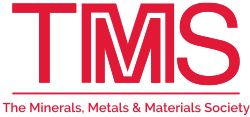This article has multiple issues. Please help improve it or discuss these issues on the talk page . (Learn how and when to remove these messages)
|
 | |
| Founded | 1957 |
|---|---|
| Type | Professional Society |
| Legal status | 501(c)(3) Tax-exempt Organization |
| Focus | Minerals, Metals, and Materials Science and Engineering |
| Location | |
| Origins | Member society of AIME |
Area served | Worldwide |
| Method | Conferences, Publications, Courses |
| Members | 13,000 [1] |
President | Daniel Miracle [2] |
Key people | James J. Robinson (Executive Director), |
| Revenue | $7M+ |
| Employees | 30 |
| Website | www.tms.org |
The Minerals, Metals & Materials Society (TMS) is a professional organization for materials scientists and engineers that encompasses the entire range of materials and engineering, from minerals processing and primary metals production to basic research and the advanced applications of materials. [3]
Contents
- Technical divisions
- Publications
- Journals
- Studies
- Board of directors
- See also
- References
- External links
The society's functions include providing forums for the exchange of information; encouraging technology transfer; promoting the education and development of professionals and students; representing the profession in the accreditation of educational programs and in the registration of professional engineers (a U.S.-grounded activity); encouraging professionalism, ethical behavior, and concern for the environment; and stimulating a worldwide sense of unity in the profession. [4]
TMS is headquartered in Pittsburgh, United States, but is international in scope. Included among its approximately 13,000 [1] professional and student members are metallurgical and materials engineers, scientists, researchers, educators, and administrators from more than 70 countries on six continents. It uses a volunteer driven structure with members serving at all levels of the society including shaping the policy, programming, and publications of the society.